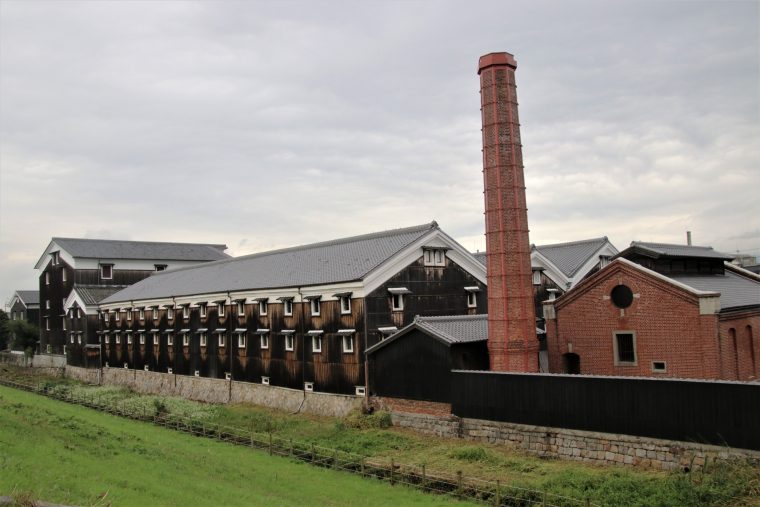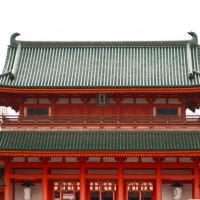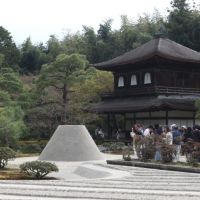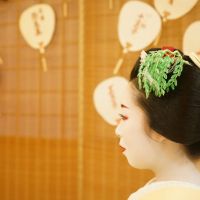Fushimi Sake – one of Kyoto’s cultural assets
Masaya Osada
Latest posts by Masaya Osada (see all)
Have you ever been to Kyoto? or are you planning to visit Kyoto in the near future?
When you think of Kyoto, you might have an image of a more traditional brewed sake. Well, you would be right! Kyoto is the second prefecture in Japan to produce the most sake, following Hyogo prefecture which is first. But even being in second place, Kyoto has not only a culture of sake, but also a culture that is loved by both Japanese and foreign people alike – the traditional culture of Japan. Such a wonderful and beautiful mixture of sake and culture that allows people from other countries have a rare and immersive experience in Kyoto.
Let me take this opportunity to introduce more about the sake culture, that runs very deep in Kyoto.
Contents
Fushimi sake district map
Have you heard of a place called Fushimi (伏見) in Kyoto city? You may of heard of the Fushimi Inari Taisha – a 1300-year-old shrine is located in Fushimi, and it is one of the most attractive shrines in all of Japan for both Japanese and foreigners – Fushimi has its own unique character, and it is a sake district.
Actually, Fushimi is one of the most famous places in Japan for sake. It has a high density of sake breweries, which are called Sakagura (酒蔵). There are about 40 sake brewers there, making Fushimi an ideal place to experience the sake culture. From traditional sake to trendy sake, there is a vast variety of different sake. You’ll also be amazed to find yourself surrounded by the picturesque sake breweries and canals, where you can enjoy the calm, smoochy atmosphere, and relish a real Japanese experience.
Let me explain more about Fushimi and why it is famous for sake – its water.
Water is the most important ingredient for the production of sake. The condition and, surprisingly, the quality of the water required for use in sake, is stricter than that for the drinking water. Thankfully, Fushimi’s underground water contains the perfect amount of minerals, making it a medium hard water, which gives sake a smooth, soft and mellow texture. The small amount of iron in water is also good for brewing sake – this is the secret of Fushimi’s fabulous sake.
The name of Fushimi is written by two Japanese characters – ‘’伏’’ (fushi) and 見 (mi). During the Edo period (1615-1868), 見 (mi) character was replaced by ‘’水’’. ‘’水’’ is read as “mizu” and means water in English. Because Fushimi is an area with a lot of water – such as Ogura pond, Yodo river, and numerous ports – it developed into a commercial area with many people working and living there.
Along with Fushimi castle, the center of Fushimi had many residences belonging to the samurai who served the various Daimyo in and around Kyoto, as at that time, Kyoto was the imperial capital of Japan. Perhaps you have watched some of the popular samurai films such as ‘’Seven Samurai’’ or ‘’Rashomon’’ by the renowned director Akira Kurosawa. Samurai is always portrayed as drinking sake, though of course, Samurai weren’t the only ones who would enjoy it. Sake was pretty much the only grownup alcoholic drink available to Japanese during Edo period, so you can imagine how lively Fushimi would have been. Therefore sake had a big role in the lives of Fushimi’s residents.
For Fushimi residents and businesses, water is very special, as is sake for the local people. Fushimi today, continues to have a unique and special culture stretching back over hundreds of years.
Let me introduce some of the places in Fushimi related to sake that you might want to plan to visit:
Fushimi Sake Village (Fushimi Sakagura Kouji)
Fushimi Sake Village opened in March 2016. So quite new, but you will find Fushimi Sake Village attracts so many visitors. Once you go into the village, you will find a 20 meter long counter with about 100 different kinds of sake to choose from. You can taste and compare many kinds of sake from 17 different local sake brewers at this village.
A set of the best sake, such as Jyunmai, Jyunmai Ginjo, Hon-Jyozo and Nigori from each of the 17 local brewers is very popular. Just enjoy your time communicating with the local people and an opportunity to discuss sake. You shouldn’t miss the delicious foods there as well – quite a package for you to enjoy.
Choken-ji temple
You’ll need to walk through the Fushimi sake district to get to the temple, and will find some wooden sake barrels at the temple gate.
Why do temples have sake bottles and barrels? Because these are from the brewers who donate them out of respect and to be prosperous.
Actually, they are empty barrels usually though!
Gekkeikan Okura Sake Museum
If you want to find out more about sake, you must visit Gekkeikan Okura Sake Museum in Fushimi. This museum is run by one of the legendary sake companies, Gekkeikan Sake Company. Gekkeikan has founded by the Okura family, and has 380 years of history, and remarkably 14 generations. 2017, they celebrate their 380th anniversary, and the first Gekkeikan generation started in 1637, since then, they have been producing amazing sake – we can really feel the history!
It is always great to deepen your knowledge, the more you know about it, the more you love it. As one of the biggest sake breweries, Gekkeikan takes their responsibility very seriously and will explain and show you a lot of sake. What you can discover at Gekkeikan Okura Sake Museum is the whole process of making sake, and also its history; many sake-related tools; old sake coupons and posters; the old payment counter and so on. The brochures are available in English, Chinese, Korean and Japanese. You can also download them from their website. It might be a good idea that you download a brochure in advance and find what the museum has to offer, then you will learn more when you visit. The Gekkeikan website has an English page, and the English language will be available in the museum.
There is a sample set of 3 Kiki-zake that you can experience. Kiki-zake is a perfect way trying sake little by little to taste. You are given a small amount of sake in a tasting cup, and if you like it, you can buy the same sake from a shop.
Admission is 300 Yen, and you can see a lot of information about sake, and the fee includes a sample Jyunmai-shu (純米酒) 180ml souvenir for you to take away, so it is a very good deal!
Opening Hours: 9:30 to 16:30 (entry until 16:00)
Closed: New Year and Obon holidays
Admission: 300 Yen
Website: http://www.gekkeikan.co.jp/english/kyotofushimi/museum.html
Kizakura Kappa Gallery
Here is another place you must visit in Fushimi, which is called Kizakura Kappa Gallery. This gallery is run by the Kizakura sake company, which was founded in 1925. The Kappa on the company logo is one of Japans mythical monsters and has been used for Kizakura’s TV commercial and the marketing campaigns for many years. Kizakura is not a mature sake company when compared to some of the other historical sake companies, so they decided to be something different from the others. To use the Kappa was successful, as they gained more customers and gave sake a fun image. Therefore their gallery is named Kappa as well.
You can experience how to brew sake, but also find out about Kappa and their history by visiting the Kappa exhibition. There is a Kizakura Kappa family TV commercial, where each member of the Kappa family had a manga character, which is very interesting.
Kizakura has more! Kizakura Kappa Country 黄桜酒場 (Kizakura sakaba) just next to the Gallery.
You can taste not only sake, but beers made by Kizakura using Fushimi water. There is also delicious food menu as well – sashimi, tempura, bento box, soba, and also Kaiseki (Japanese multi-course haute cuisine). You can relax and complete your day by happily enjoying sake and Japanese foods together!
Opening Hours: 10:00 to 17:00
Closed: Every Monday except for Public Holiday, December 31, January 1
Admission: Free Website: http://kizakura.co.jp/restaurant/country/memorial/index.html
Matsui sake brewery
Matsui sake brewery has been in operation since 1795, and has such a beautiful building built in the Edo period, and still maintains the same appearance.
There are more than 3000 tools for making sake, and 459 literatures related to sake making, which make up the display at the Matsui sake brewery.
You are invited to explore this cultural property and look at many of tools for making sake in order to feel the passion and skills of its brewers.
Opening Hours: 10:00 to 16:00
Closed: Every Monday and Brewing period (December –January)
Admission: 300 Yen
Website: http://matsuishuzo.com/
The best 3 Kyoto sake brands:
■Sawaya Matsumoto (澤屋まつもと)
Dry and semi-sparkling, full of aroma and has Umami from rice.
Why don’t you try this sake, with brewing techniques from two brothers who create new styles?
1,016 Yen~21,600 Yen
■Tamagawa (玉川)
Condensed Umami and rich flavor, with a nutty taste.
You can find sake for you, and also for someone as a gift in a Paulownia tree box.
1,080 Yen~8,100 Yen
■Eikun (英勲) Saito sake brewery
Very smooth and fruity. There is a dry aftertaste and spice.
Eikun has received a gold prize award in the sake category at the International Sake Challenge in London, 2017.
1,058 Yen~21,600 Yen
Visiting Kyoto is a very special experience, so by visiting the breweries and tasting their sake, and the sake museums to find more about how sake is made, would make the visit quite exceptional. I would also recommend a trip to a local Izakaya (a kind of Japanese style/English pub) to meet the local people. They will be very happy to chat with you over a glass of sake or two. If you ask “おすすめの酒はなんですか?” (Which sake do you recommend? / Osusume no sake wa nan desuka?), I am sure they would be happy to discuss the details of sake in Kyoto late into the night.
Exploring Kyoto’s cultural assets, such as its renowned sake, offers a glimpse into the city’s deep traditions. Alongside sake, the “Hochoshiki Knife ceremony” stands out as a captivating experience, highlighting the craftsmanship behind Japanese knife-making, and further enriching the cultural tapestry of Kyoto.
https://www.hochoshiki-knifeceremony.com/
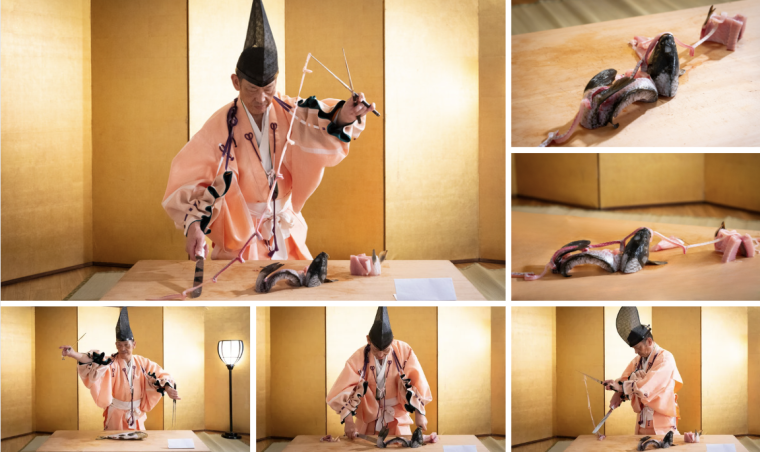
A sacred place for Japanese food, a treasure house of ingredients, Minami-Boso Takaya Shrine Kitchen knife ceremony "Ryumon-no-Koi" long story: edited by Minamiboso City Tourism Association Channel
When I have visited a sake brewery, the owner recommended I have sake with chocolate and daifuku sweets (a type of Japanese sweet – a small round mochi stuffed with sweet beans). I was so surprised having sweets with sake but actually, I found it was a good combination and enjoyed that experience.
The culture of sake – quite a profound world!
Thank you very much for reading, and I hope you enjoyed!
Make an online reservation to have a precious time with Geisha!

